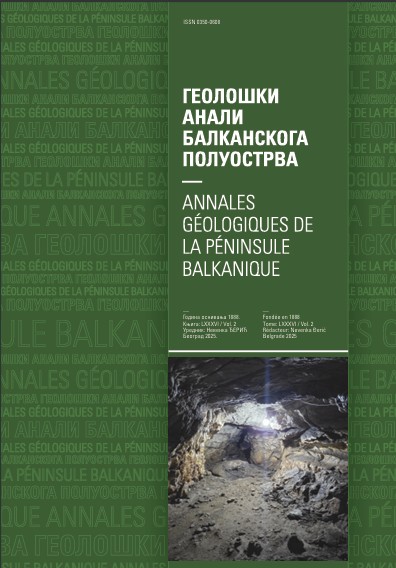Facies analyses, biostratigraphy and radiometric dating of the Lower–Middle Miocene succession near Zaječar (Dacian basin, eastern Serbia)
Abstract
Lower–Middle Miocene sedimentary succession and the conformable/ unconformable relationships between the lacustrine-continental systems (i.e. DLS, SLS) and Badenian marine transgression represents one of the intrigue topics. Herein, we studied five exploration boreholes (eastern Serbia) and analyzed the main facies pattern, biostratigraphic characteristics of the Miocene succession, and applied the U-Pb radiometric dating of volcanic tuffs interstratified in the sedimentary series with coal layers (borehole NRKR- 17002). The obtained concordia age of 16.9 ±0.2 Ma for all the analysed zircon grains without any inherited cores indicate a single magmatic event. We definite the freshwater series originated during Early Miocene Karpatian (= late Burdigalian). Consequently, for the first time, we demonstrated that age of а part of the Serbian Lake System (SLS) is much older than it was previous reported. In addition, sporadic findings of foraminifers, ostracods and molluscs documented the late Badenian marine transgression in eastern Serbia. If accept this fact the flooding occurred later than in the rest of Serbia (˂ 14.5 Ma). However, the lack of quality data and unclear stratigraphic position of some parts of the clastic succession (? Lower–Middle Badenian) makes this claim uncertain.
Copyright (c) 2019 Geološki anali Balkanskoga poluostrva

This work is licensed under a Creative Commons Attribution 4.0 International License.










